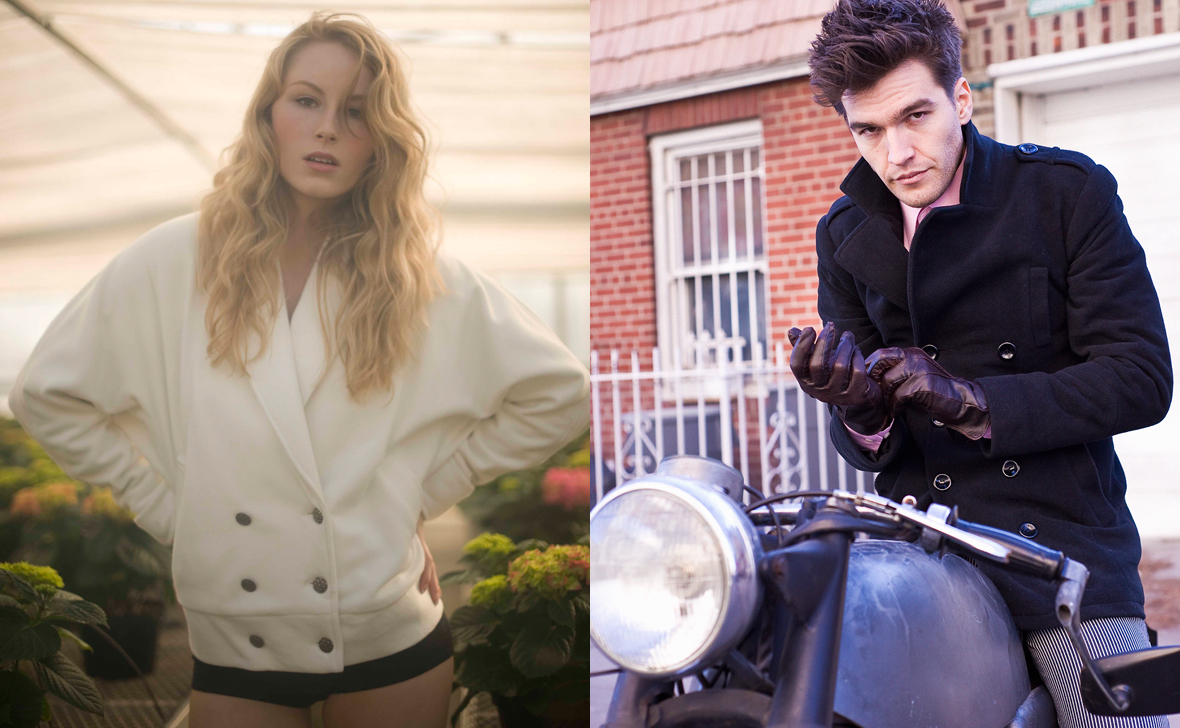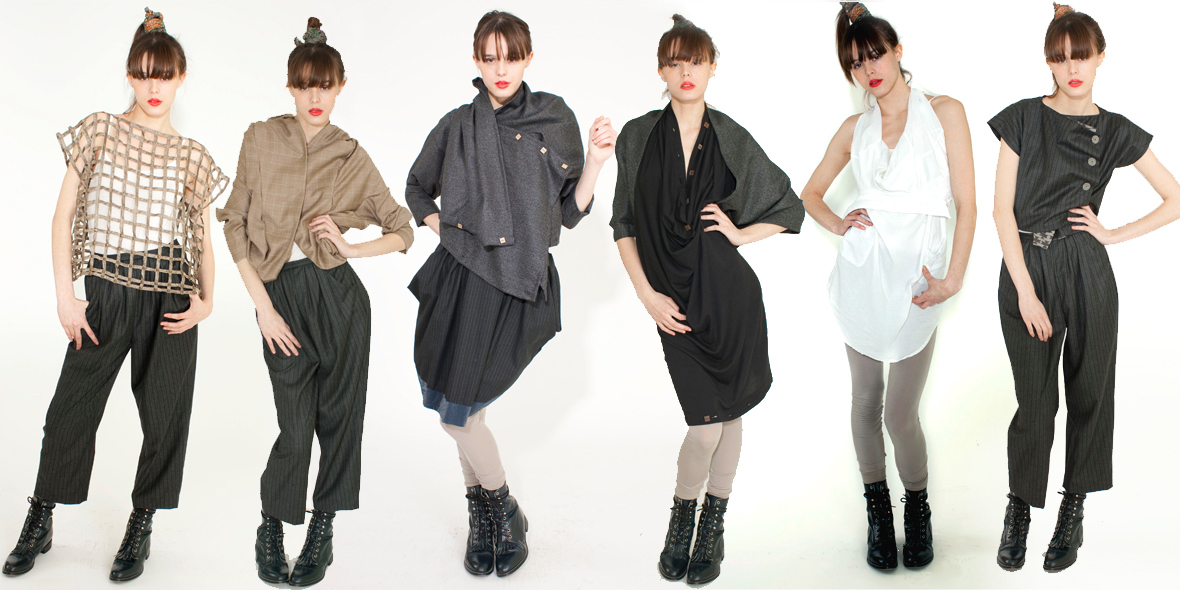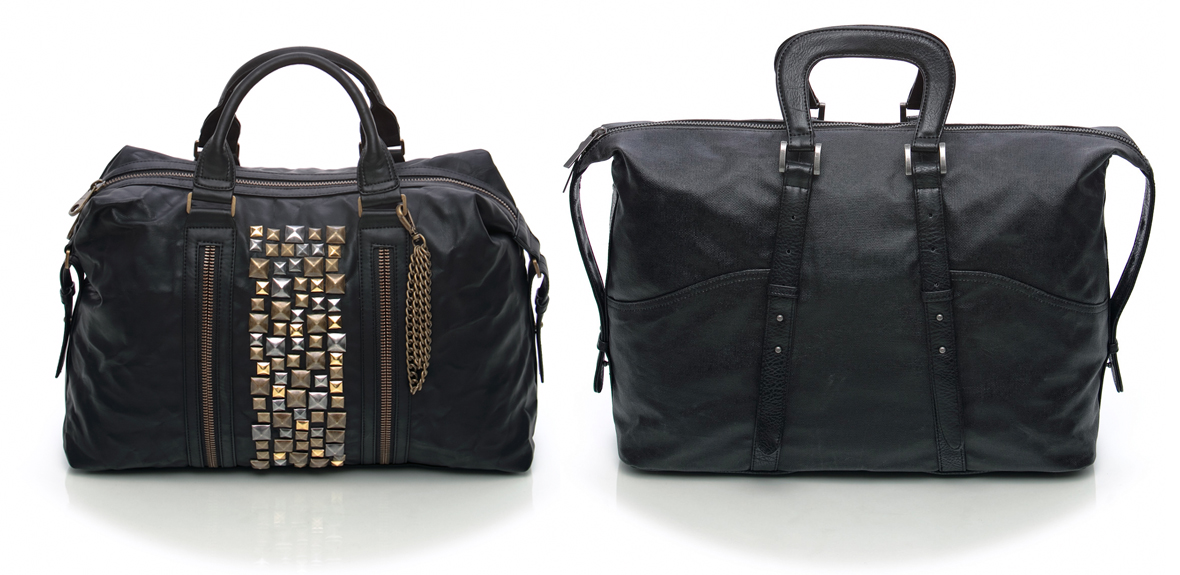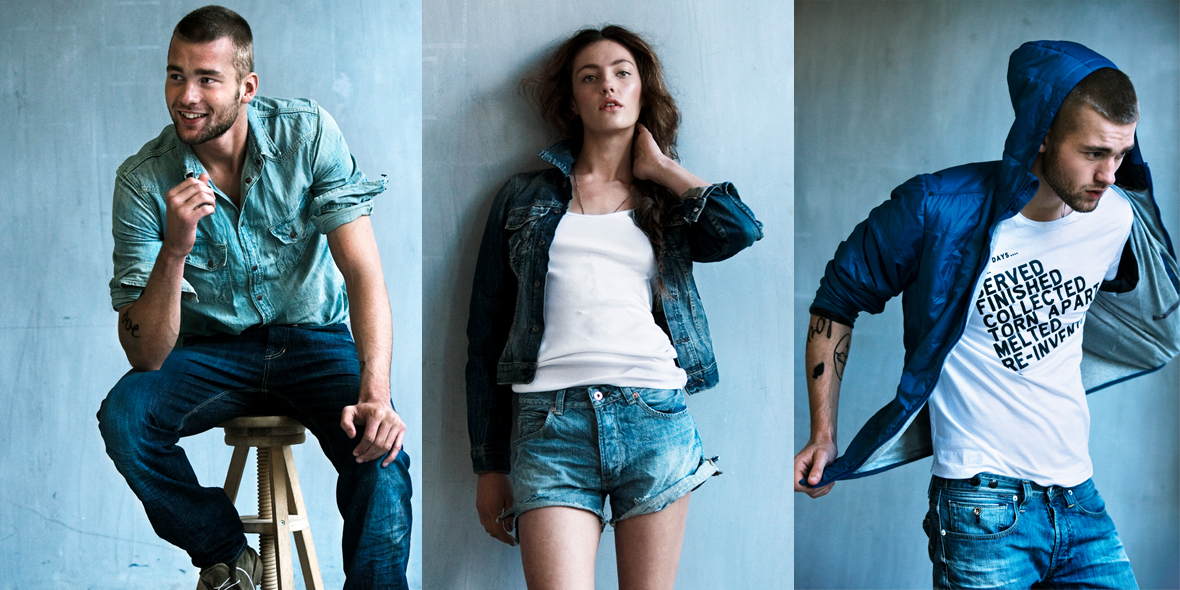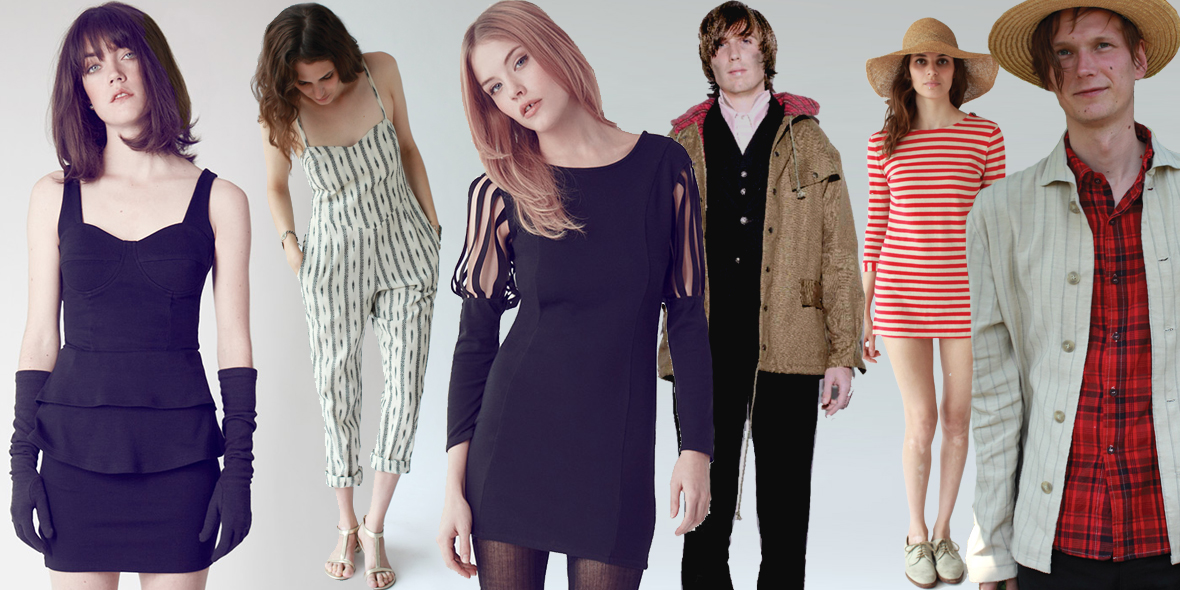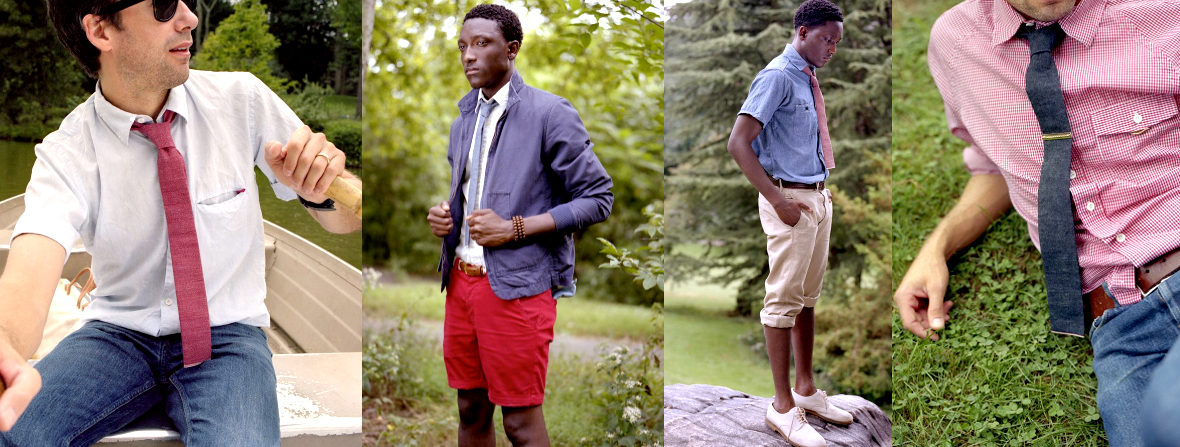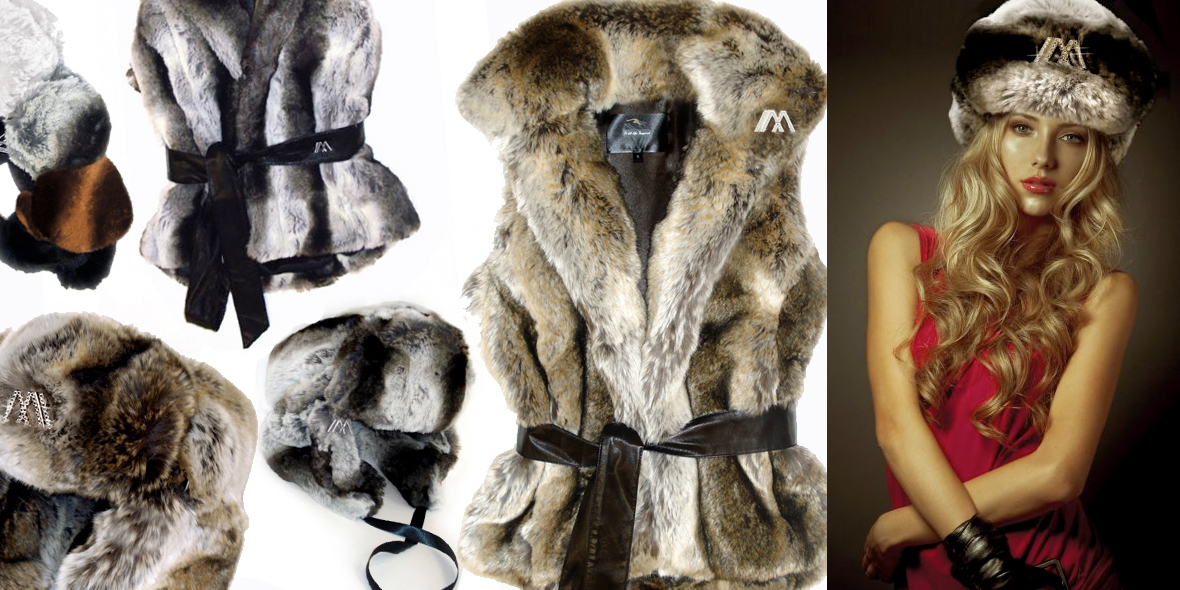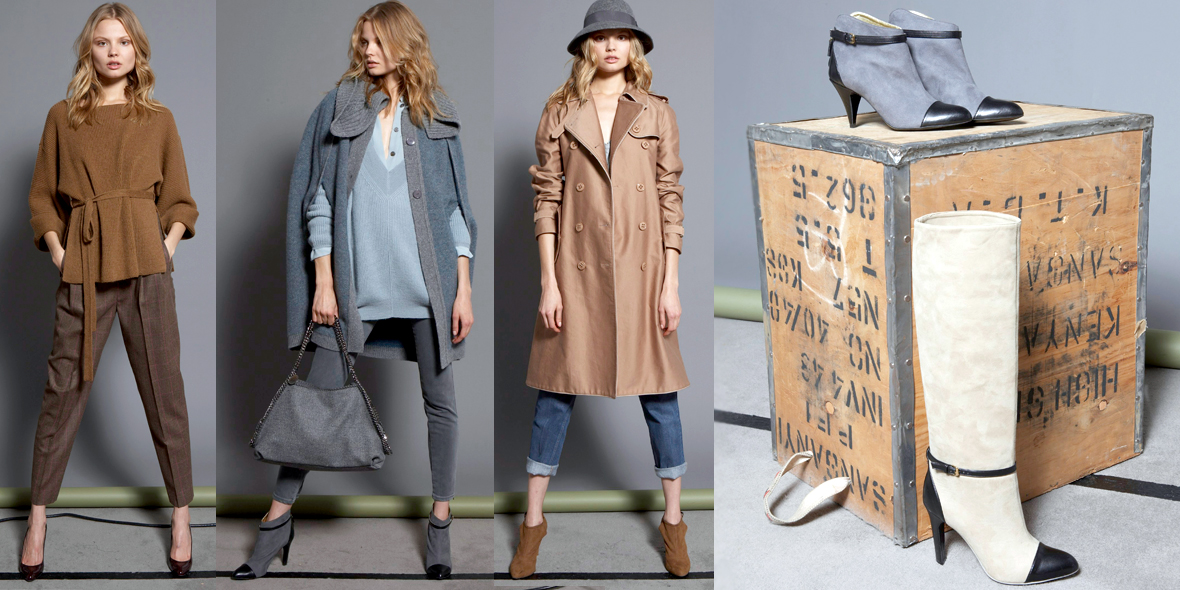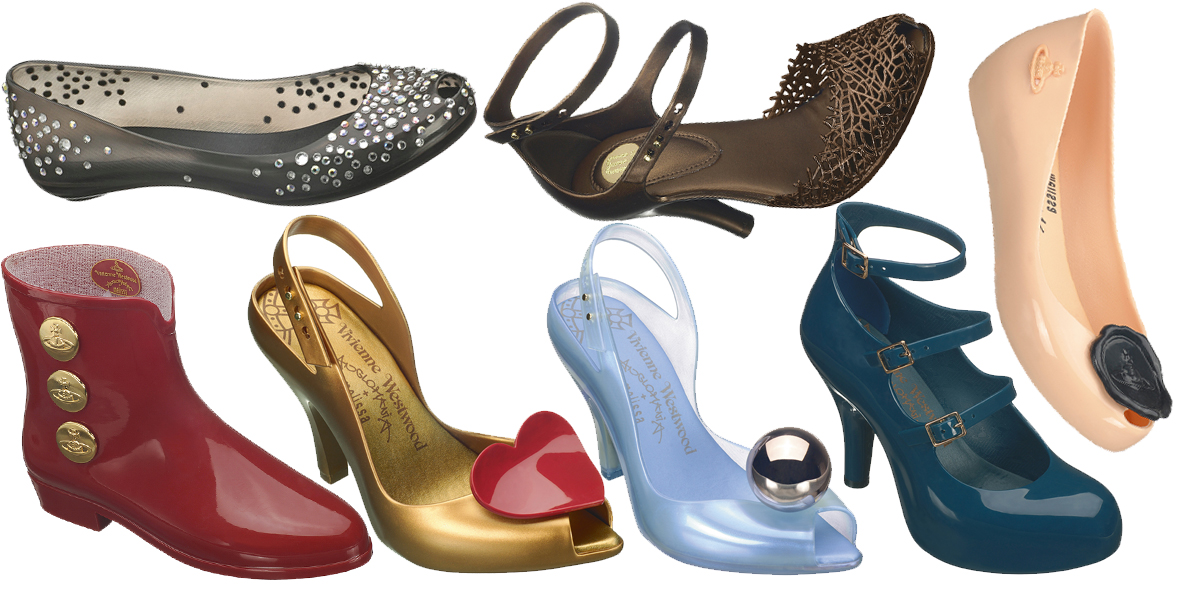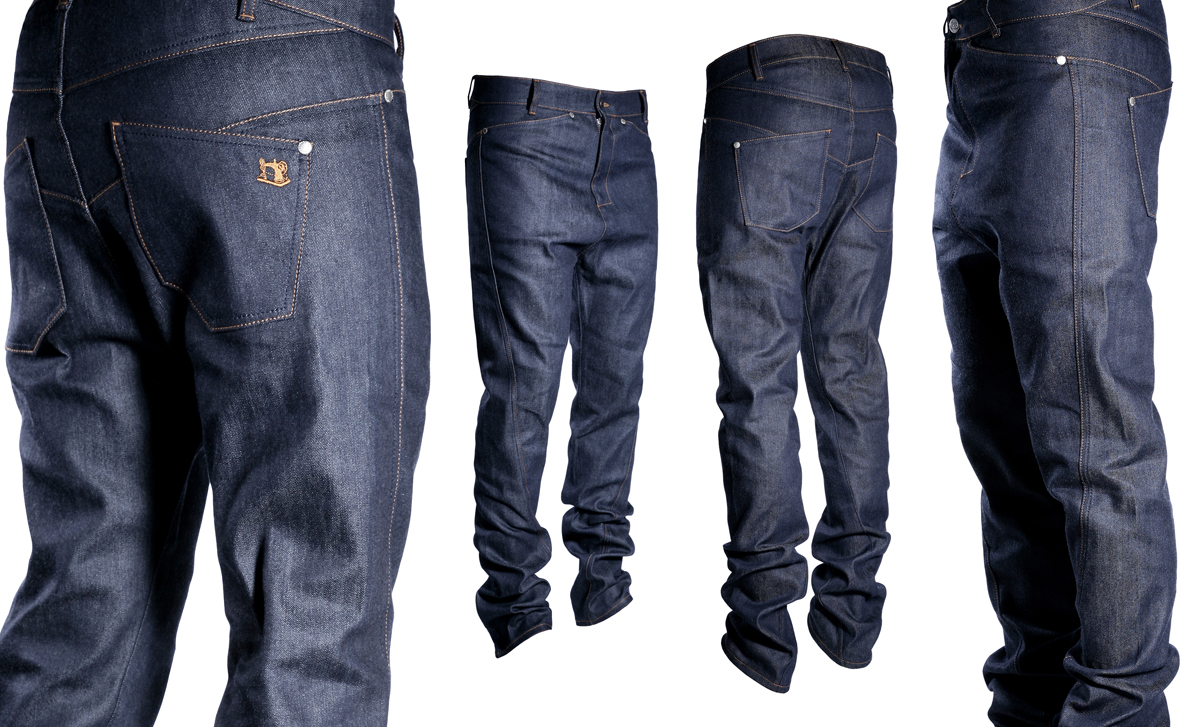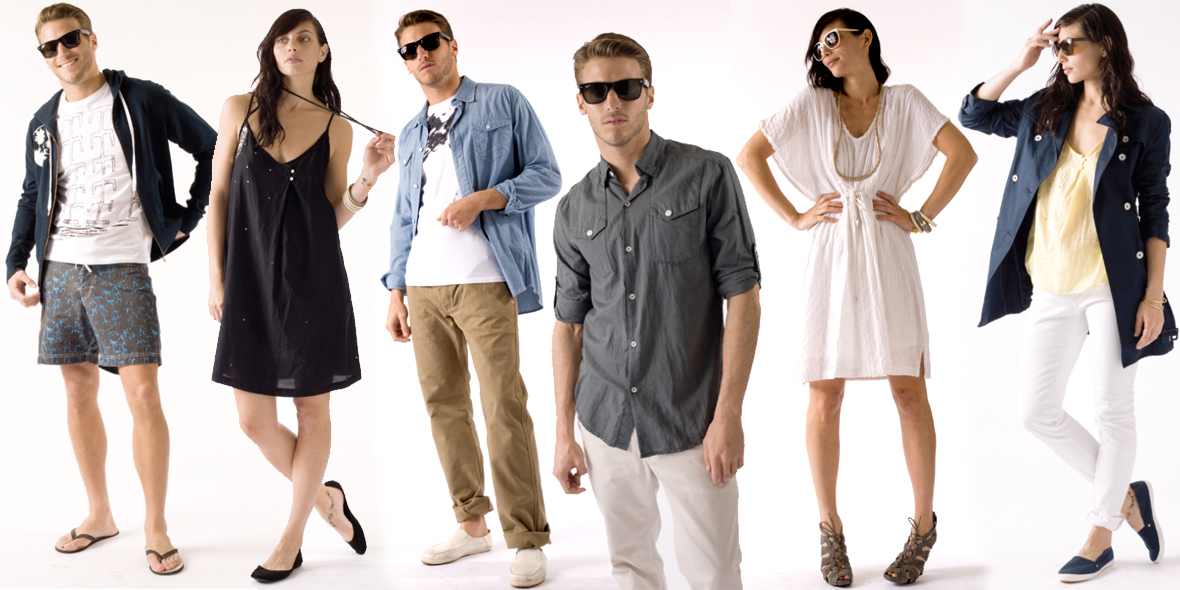Lionhearts & Battle Cries: 20 Lines for 2010
by Joshua Katcherfeatured on HintMag.com
Tevas with socks. Cargo Pants. Slogan tees. Let's face it, people who care about ecosystems, animals, and worker's rights aren't typically celebrated for their sartorial poise. Likewise, most designers who care about form, function, and aesthetics aren't typically known for their environmental wisdom or empathy; Fur coats, leather everything, toxic cotton, sweatshops.
There is new breed of designer, though, not so easily written off, who can turn old televisions into jaw-dropping shoes, who foster relationships with organic cotton farmers in developing countries, who invest in research and development of warm, biodegradable, recycled, cruelty-free textiles, whose aesthetic vision is not hampered by the challenges of navigating ethical dilemmas, and who - armed with tencel, lenpur, hemp, recycled fabrics, faux-fur, soda-bottle ultrasuede, and organics - aren't afraid of challenging the tragic credo set by heritage brands. In a culture where the iconography of the rebel is tied up in so many embarrassingly common and mainstream social, environmental and ethical muddles, these true iconoclasts are redefining cool, and reinvigorating the lost meaning of dressing like a dissident.
1. Vaute Couture. Leanne Mai-Ly Hilgart is the prefect example of a designer who dreamed big. Her line went from a fantasy (gorgeous, eco, vegan winter coats that can handle Chicago in February) to reality. The line looks as amazing as it is warm and ethical; 100% Cruelty-free, sustainable, and fair-labor. Vaute Couture took over 8 months of fabric research and development and launched just last year, but has already garnered a host of celeb fanatics from Emily Deschanel, to Alicia Silverstone, and Ginnifer Goodwin. The men's line launches August 2010. vautecouture.com
Photos: John Cizmas & Anthony Two Moons
2. Olsen Haus. Shoe designer Elizabeth Olsen has one very simple manifesto: look amazing while being an amazing human being. The former creative director at Tommy Hilfiger has put her hot, four-inch heel up the wazoo of the crunchy-hippie cliche and the disastrous leather industry. Walking around on recycled TVs and soda-bottles-cum-ultrasuede might not sound so glamorous, but take one look at these jaw-dropping vegan shoes and you'll know you can walk the walk and talk the talk. Continually researching the most ethical and sustainable materials and methods, Olsen Haus is in this game for more than just vanity, which makes one gorgeous pair a worthy investment. Olsenhaus.com
3. Study by Tara St. James. Cutting edge eco-fabrics plus artist equals Williamsburg Brooklyn's homegrown, conceptual line: Study by Tara St. James. Formely of Covet, Tara's newest incarnation, Study, starts with a visionary pattern, and ends in a minimal-waste garment made from the most thoughtful fabrics and processes (sometimes even diverting waste from other designers at her factory). Tara's vision is a future where fashion-production has zero-waste, and everyone involved benefits. If the future looks this cool, I'll see you there! www.4equalsides.com
Photos: Eric Reeves
4. Matt & Nat. Inder Bedi's bags are both seductive and functional. The entire line is 100% leather-free, but it's not the chintzy faux your mother buys on Canal St; the bags are supple, strong, and head-turning. Since livestock production is the greatest single cause of greenhouse gas emissions, livestock products like leather can never be green, which puts Matt & Nat it in a class way above animal-based leather accessories where the environment is concerned. Every single bag is lined with a faux-suede made from recycled water bottles, and the latest collection is like a glam-rock biker gone good. This pioneer began his journey in 1991 with a challenge to go vegetarian, and has resulted in one of the most sought-after accessory-lines to show us there is an edgy, elegant escape from Big Leather. mattandnat.com
5. Culturata. Culturata's mission of sartorial sustainability combined with traditional Italian tailoring and craftmanship has produced a collection of handsome, button-down shirts for the office, the party or the red carpet. While conventional cotton has been called “One of the most staggering disasters of the twentieth century” by the United Nations, designers like Culturata opt for organically grown cotton, and the man that opts for Culturata is as smart as he is fetching. www.culturata.com
As we approach Earth Day, we must ask ourselves if we're actively contributing to the world we want to live in, or if we are just sitting back, taking orders, and hoping that the decision-makers who reap the benefits of our current economic model are intelligent enough, compassionate enough, and brave enough to stop a sinking ship. Most economists believe that resources are infinite, and that infinite growth is possible, but we know better, so why aren't we stopping them?
These ardent designers have nothing financial to gain by taking the hard road. In fact, it's a risky venture that contradicts the scheme of our current economic model. When confronted with the decision to either spend a lot of money on ethical materials and processes, or go with cheap labor and cheap materials that are devastating to workers, animals, and delicate habitats, most designers opt for the economically advantageous option. If Fashion, as a form of visual and functional art, is to be sustainable, a lot has got to change. That requires designers to source more intelligently. It requires accountability, transparency, and objective, third-party analyzing and certifying of labor conditions, environmental impact, and animal welfare. But most of all, there has got to be easy and obvious financial incentives for designers, because on the other end, economically-driven organizations like Saga Furs court young designers by wining and dining them, giving them free materials to work with, and giving them money to include their products.
The practices that these designers, often known as the fourth-sector (a hybrid between the for-profit and non-profit sectors), threaten to expose have mainstream businesses and media clamoring to paint them as killjoys, party-poopers and zealots. These would-be ruiners-of-fun are making some powerful people very uncomfortable. The battle-cry of infantile self-gratification, supported by the ease of apathy and demand for cheap production is a formula that has worked it's black-magic for the last few decades. Hijacking sub-cultural symbolism and annexing representations of wealth and power, it's no surprise that this business model, and those benefiting from it, will not die a quiet death - but rest-assured that these designers are taking a stab at it's heart.
6. Kuyichi. Kuyichi offers quintessential, timeless, and striking garments that anyone with a love for meticulously constructed denim would want to invest in. Kuyichi was also the first brand to introduce organic denim to the fashion world. When the Dutch NGO, Solaridad started developing organic cotton in Peru, no denim lines were interested in utilizing this incredible material, so Solaridad started their own denim line. But they didn't stop there; recycled plastic bottles, hemp, lenpur, linen, spare and recycled cotton, tencel, bamboo, natural dyes, and other sustainable fabrics and methods are continually being added to the mix. On top of that, they are stellar where labor is concerned, with social standards approved by Made-by, SA8000, Fairwear, BSCI and Wrap. Kuyichi is a force to be reckoned with, and more lines should take their lead in every area. www.kuyichi.com
7. Cri De Coeur. A cry from the heart is something we can all benefit from. Gina Ferraraccio's line, started in 2007, channels that passionate desire for change and combines it with wearable, modern sophistication, rich colors, and scrupulous detailing. With experience at Anna Sui, Bergdorf Goodman and over five years in lingerie design, Gina is no stranger to capturing what women want and pairing it with a vegan, environmental, and uncompromising ethic. www.cri-de-coeur.com
8. Samantha Pleet / Patrick Pleet. Organic cotton twill and organic canvas go a long way. Samantha and Patrick Pleet's nostalgic dresses, whimisical jumpers and iconic tailored suits combine a rock-and-roll edge with a bucolic softness. That's why bands like Au Revoir Simone, Chairlift, The Pains of Being Pure at Heart, and Apache Beat get in line to be styled by Samantha. At only 27, Ms. Pleet received a 2009 Ecco Domani Sustainability Award for her work, and continues to bring a discerning eye to both the aesthetics and the substance behind sustainable fashion. www.samanthapleet.com
9. NOHARM. Europe has an historical relationship with carefully constructed men's shoes, so it's not surprise that the craftsmanship of the United Kingdom's NOHARM is timeless and uncompromising. Hand-crafted in Italy under fair labor conditions, certified by the Vegan Society as 100% cruelty-free, and eco-conscious - they look as amazing as their efforts. Carbon dioxide, methane, and nitrous oxide together cause the vast majority of global warming. Raising animals for food and fiber (leather, wool, etc) is one of the largest sources of carbon dioxide and the single largest source of both methane and nitrous oxide emissions. Going leather-free has never been more urgent, but gentlemen need not compromise their style thanks to companies like NOHARM. www.noharm.co.uk
10. The Hill-Side. Men's accessories are too often run-of-the-mill. In addition to redefining tie-etiquette, The Hill-Side, a Brooklyn-based accessory line, makes ties and pocket-squares from selvedge fabrics, diverting them from landfills and making really cool, classic square-end ties, pocket squares, and handkerchiefs. And in some cases, the selvedge is even organic cotton. One man's trash truly is another man's treasure. www.thehill-side.com
The fashion industry stands at a tumultuous crossroads where the effects of textile production, resource extraction, globalized labor and economics are bottle-necked into a seemingly small-scale personal-choice, and an often bumptious celebration of individualism. The fashion consumer has the safety of saying "It's just one pair of shoes, and I'm just one person who's not gonna' change anything, so I may as well enjoy it", and the industry has the safety of saying, "We're just meeting a broad consumer demand. If it was so terrible, people wouldn't buy it". Clearly, it's a dangerous relationship where no one is held accountable for the very real and very huge impacts on people, animals, and ecosystems. What's worse, the daunting task of staying on top of all the issues connected to something as inconspicuous as a belt or a bra is not only discouraged, but it's intentionally obscured by powerful PR firms.
For example, leather can never be sustainable or "green", no matter what kind of tanning process used. Cows and other livestock like sheep have been cited by the United Nations as being the single greatest contributors to greenhouse gas emissions. The ecological damage is done in breeding so many - as opposed to the popular belief that "vegetable tanning" can resuscitate the most profitable by-product of a tragic industry. This all happens before the sheep are sheared or the skin is pulled off the cow's body and preserved. Animals need land. They need feed. They need drinking water. The transportation and mass processing of their body parts and hairs into shoes and sweaters requires a lot of petroleum - often more than just making petroleum based synthetics. Yet this "material" continues to be so ubiquitous, it goes unquestioned. The conventional cotton industry has been compared to a modern-day Chernobyl and one of the greatest disasters of the 20th century by the United Nations, where over 25% of all insecticides in the world find a billowy home. The people working in the cotton fields of Uzbekistan are faced with an epidemic of cancer, birth deformities, and a devastated environment. Then there's clandestine sweatshops. Toxic tanneries. Sadistic fur farms.
There are, thankfully, beacons of light in this incredible darkness. Designers who value impeccable form equally with transparency, accountability and an environmental consciousness. These new trendsetters are about more than just aesthetics, and they bring to the table a vision of the future we can all indulge in helping to create. But the story does not end here, on Earth Day and it does not end with these 20 designers. There is a crucial need for more electrifying visionaries, so what is stopping you from taking the first step?
11. Imposter. As if you needed a reason not to wear real fur, Imposter is the most lux, realistic, and motivated line when it comes to saving animals from fur farms where gassing, bludgeoning and even anal and vaginal electrocution are standard methods of killing. In the wild, animals often chew off their own limbs to escape leg-hold traps, or slowly bleed or starve to death. Runoff from farms and the toxic chemicals used to preserve the pelts make fur the furthest thing from "green". With a website that functions as both an activist tool and a shopping cart, and the "IM" symbol letting others know it's faux, this enterprising brand take its inspiration from animals, without taking their lives or freedom. When faux can look and feel this good, there's no excuse to wear the real thing. 10% of all sales go to animal advocacy organizations. www.imposter4animals.com
12. NOVACAS. In Portuguese, "no vacas" means "no cows". But the supple, sturdy and faultless footwear leaves nothing to miss about leather. Novacas' materials are 80% biodegradable, and their mission is to eventually be 100% biodegradable. Crafted in Portugal under strict environmental and labor standards, using water-based glues, recycled shoe boxes, and entirely avoiding the ecological calamity that is the leather industry, sister designers Erica and Sara Kubersky not only create a collection of alluring and wearable shoes and boots for men and women, but they also own New York City's famous vegan shoe and accessory store, MooShoes, in the LES. www.novacas.com
13. Bassike. Australia is packing some serious punch with the fashion-forward, and eternally effortless line, Bassike. Organic cotton jersey staples make up the bulk of Deborah Sams and Mary Lou Ryan's brainchild, born in 2006, and it's no surprise considering that it can take almost a 1/3 pound of synthetic fertilizers to grow one pound of raw cotton. Conventional cotton uses approximately 25% of the world's insecticides and more than 10% of the pesticides (including herbicides, insecticides, and defoliants). Their long-term goal is to be completely carbon-neutral, never compromising on their artistic vision. www.bassike.com
14. PAZ Apparel. On a trip to the South America, Melinda Damico saw trucks covered in large, weathered canvas tarps. When a friend showed her a handsome garment made from one of the tarps, Melinda immediately knew she wanted to start an recycled accessory line. The utilitarian, distressed appeal of their bags is universally appealing. The factory PAZ is produced in is small and family owned and already maintained a relationship with the truckers whose tarps they used. Also in the Rainforest, a vegetable-leather made from tree-sap (without cutting down any trees) by a few indigenous Amazonian communities allowed PAZ apparel to both add interesting detailing to their bags and support a sustainable, indigenous, and vegan enterprise. Their commitment to fair-trade, ecology and animal rights makes PAZ an inspiration to designers everywhere. www.pazapparel.com
15. Turk + Taylor. The San-Francisco-based Turk + Taylor wields organic cotton, organic french terry, upcycled sailcloth and other sustainable fabrics, like beautiful weapons. Mark Morris' mastery of reinventing classics and capturing nostalgia makes T+T a beguiling and creative instrument of change . All garments are manufactured in the San Francisco Bay Area under fair conditions, and Morris strives to perfect the intrinsically intertwined areas of sustainability, social justice and animal advocacy. www.turkandtaylor.com
Giving-a-crap about animals, people, and the environment does not mean compromising style, anymore. It means living with style, substance, and sophistication. The heritage luxury brands (Gucci, et al) are finally hearing the death-rattle and attempting to figure out how to become sustainable (or at least greenwash their marketing enough to convince people that leather and cashmere could ever be sustainable), it’s important to point out the clothing lines that are using organic cotton, fair labor, recycling waste, and moving towards having a substantial vegan product base. Ironically, the rebels and subcultures invoked by so many mainstream lines end up resulting in the most mainstream and damaging environmental and social problems. That's why these 20 designers are the real rebels with lion hearts and rallying-cries that prove we can use the visual power of fashion in our mission.
While it’s easy for some activists and critics to brush off the entire fashion industry (including the sustainable and vegan brands) as “frivolous” or have a “down with it all” attitude and concentrate on what they see as more pressing issues – the fashion industry impacts the environment, people, and animals in such huge ways that it deserves much more detailed attention.
It takes visionary designers to create sought-after pieces, and relentless businesspeople to demand materials and processes that not only avoid causing harm to people, animals, and the planet - but raise awareness and benefit all individuals involved in the life-cycle of the product. This is where the giant ship is being turned around, but sailing against the current, away from a deadly waterfall is no easy task.
16. Stella McCartney. Where would eco-fashion be without Stella? Organic cotton knits and coats. Biodegradable, faux-suede shoes and boots. Vegan bags to die for that no cows, snakes or crocs died for. With a reputation for an unshakable combination of style and ethics, Stella McCartney may be the biggest name bringing ec0-drama and animals rights to the biz. Her star-studded, jam-packed runways, and flawless, compassionate pieces make her brand a tried-and-true role-model and beacon of light to other designers who want more than business as usual. In more recent seasons, Stella has been incorporating more and more organic cotton and innovative eco fabrics. www.stellamccartney.com
17. Melissa Plastic Dreams. The sustainable, zero-waste, fair-trade, recycled and recyclable-plastic shoe company known for their cutting edge designs might make you feel like a kid in a candy store. The colors, the shapes, and even the smell of these shoes might make you feel like running through a sprinkler. Collaborations with fashion superstars like Vivienne Westwood and Jean Paul Gaultier and a mission with heart ensures that Melissa is here to stay. Melissa's men's line, M:ZERO will debut this fall with oxfords, derbies, loafers and driving shoes. www.melissaplasticdreams.com
18. Collection Pas. When champion skateboarder and owner of Sole Technologies (Etnies, Emerica, etc) Pierre Andre Senizergues set out to do a sustainable menswear line, he knew he's have to take some risks. After producing the 11th Hour with Leonardo DiCaprio, he needed a red-carpet tux to celebrate the film, so he made one out of recycled cassette tapes. He teamed up with designer Pierluigi Pucci to make gorgeous blazers from recycled parachutes, lined with organic cotton or other people's defect tee-shirts, coats from recycled tarps insulated with recycled soda-bottle-poly-filler, awe-inspiring and bad-ass biker jackets and military influenced trench coats from a thick, rubbery, plant-based and biodegradable "leather" from sustainable and fair-trade Amazonian indigenous communities, and bow-ties from recycled tees, was an impressive and groundbreaking undertaking. When I personally went and met Pierre and Pierluigi and tried everything on, I became a true believer in the future of amazing, ethical fashion. www.collectionpas.com
19. Trousers London. Reinventing a staple as classic as a pair of jeans is no easy task, yet Trousers London has become a denim connoisseurs’ dream. Constructed by the genius of architects, designers, and social media experts, the Italian-crafted line started in 2008 using exclusively 100% raw organic denim. These jeans come in nine styles with more on the way. They are built to last for years, challenging our appetite for disposable clothing. www.trouserslondon.co.uk
20. Loomstate. Rogan Gregory and Scott Mackinlay Hahn started Loomstate in 2004 in order to create a larger demand for organic cotton and socially and environmentally responsible labor and production. Classically American and a casual coolness rooted in the last four decades of subculture, the line gets it's inspiration from nature: from golden ratios and leaf patters to oceans, forests, deserts and all the critters crawling, swimming, and soaring between them. What's amazing about Loomstate is that they are the first to have made organic cotton both affordable, doing a line for Target, and lux, partnering with Barney's to make exclusive "Barney's Green" garments. www.loomstate.org
